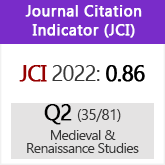La penetración de las redes de trashumancia castellana en la Sierra Norte de Sevilla
DOI:
https://doi.org/10.3989/aem.1993.v23.1042Abstract
Though the already classical analyses of the Mesta (Association of Spanish transhumant sheep breeders during the Middle Ages) and transhumance systematically forget the South of the Spanish Peninsula, recent studies on Andalousian stockbreeding demonstrated how Hispanic transhumance networks reached the area of the Guadalquivir and, more precisely, the Reign of Sevilla. We can thus observe a way of penetration of the Mesta cattle in the Sevillian region through the nowadays called Sierra de Huelva that reached, at least, Andévalo. The optimum conditions that the cattle found to feed itself in this area encouraged several shepherds to move with their herds from remote places such as Soria or Logroño. Nevertheless, on their way they found some towns (specially Fregenal de la Sierra) where farming wealth was greater and special paths for the animals were designed to protect crops. Despite preventive measures that were taken, important confrontations between stockbreeders and farmers took place and new cattle tracks were made to make transhumance easier.
Downloads
Download data is not yet available.
Downloads
Published
1993-12-30
How to Cite
Carmona Ruiz, M. A. (1993). La penetración de las redes de trashumancia castellana en la Sierra Norte de Sevilla. Anuario De Estudios Medievales, 23(1), 111–118. https://doi.org/10.3989/aem.1993.v23.1042
Issue
Section
Monographies
License
Copyright (c) 2020 Consejo Superior de Investigaciones Científicas (CSIC)

This work is licensed under a Creative Commons Attribution 4.0 International License.
© CSIC. Manuscripts published in both the printed and online versions of this Journal are the property of Consejo Superior de Investigaciones Científicas, and quoting this source is a requirement for any partial or full reproduction.All contents of this electronic edition, except where otherwise noted, are distributed under a “Creative Commons Attribution 4.0 International” (CC BY 4.0) License. You may read here the basic information and the legal text of the license. The indication of the CC BY 4.0 License must be expressly stated in this way when necessary.
Self-archiving in repositories, personal webpages or similar, of any version other than the published by the Editor, is not allowed.














